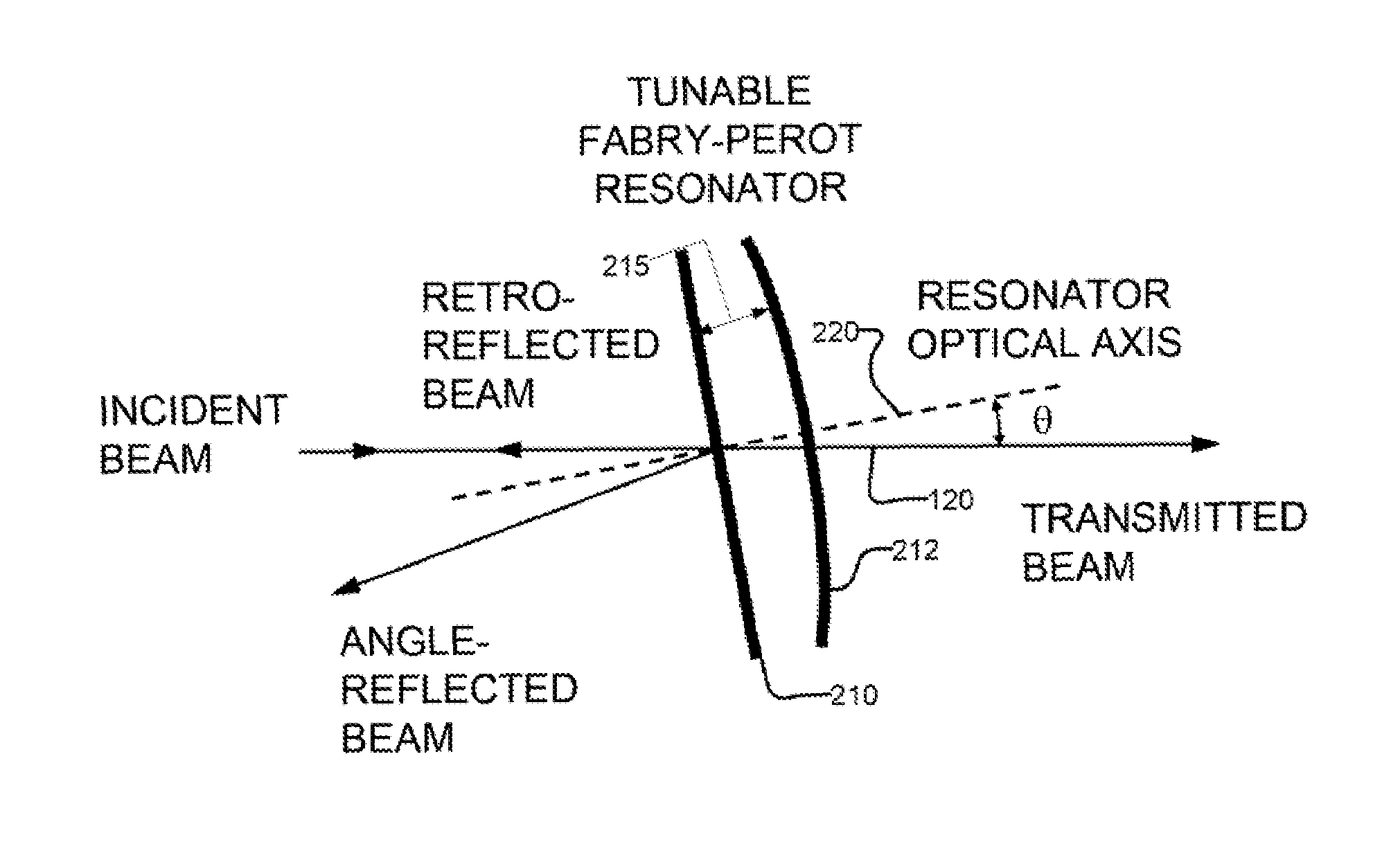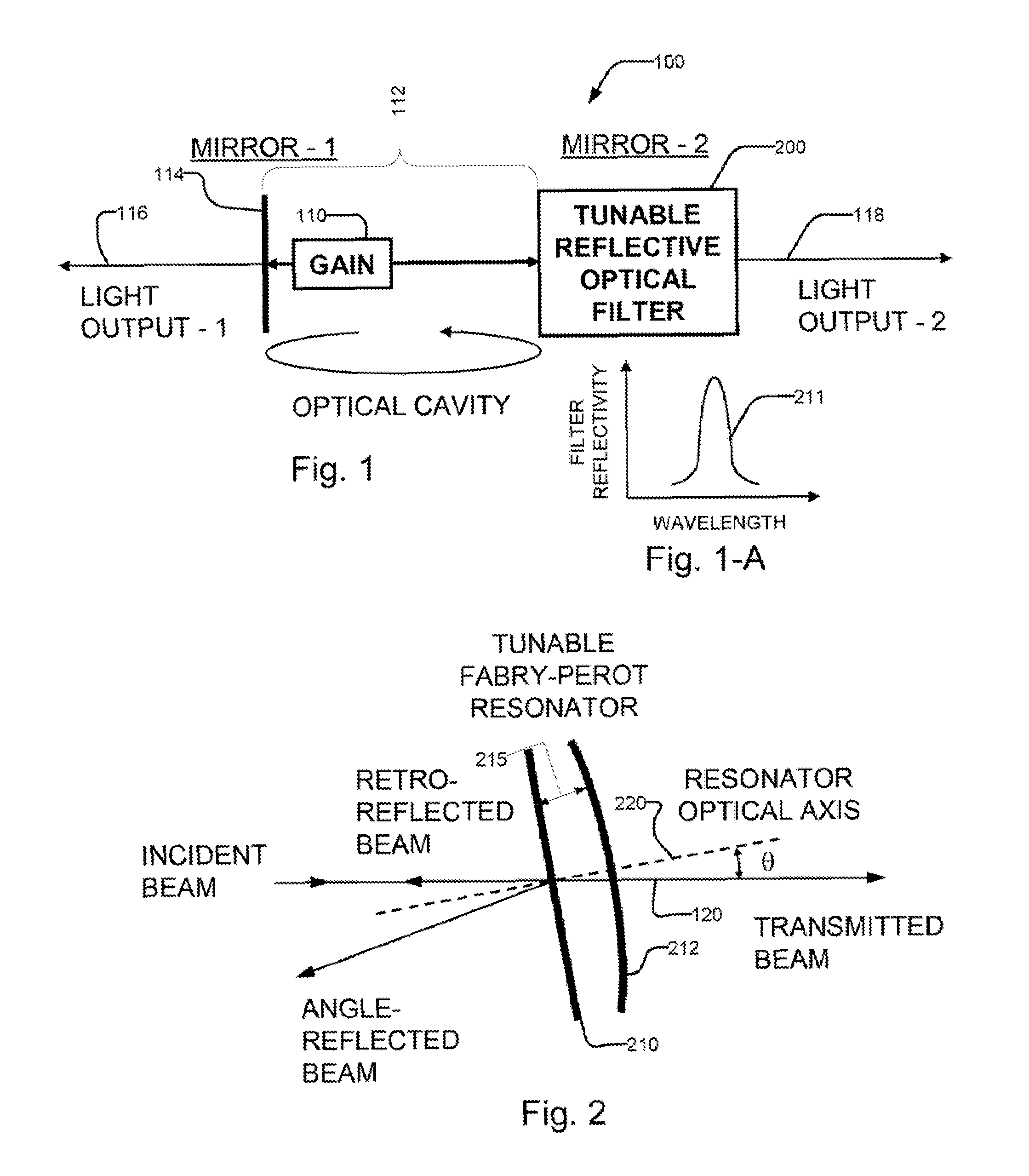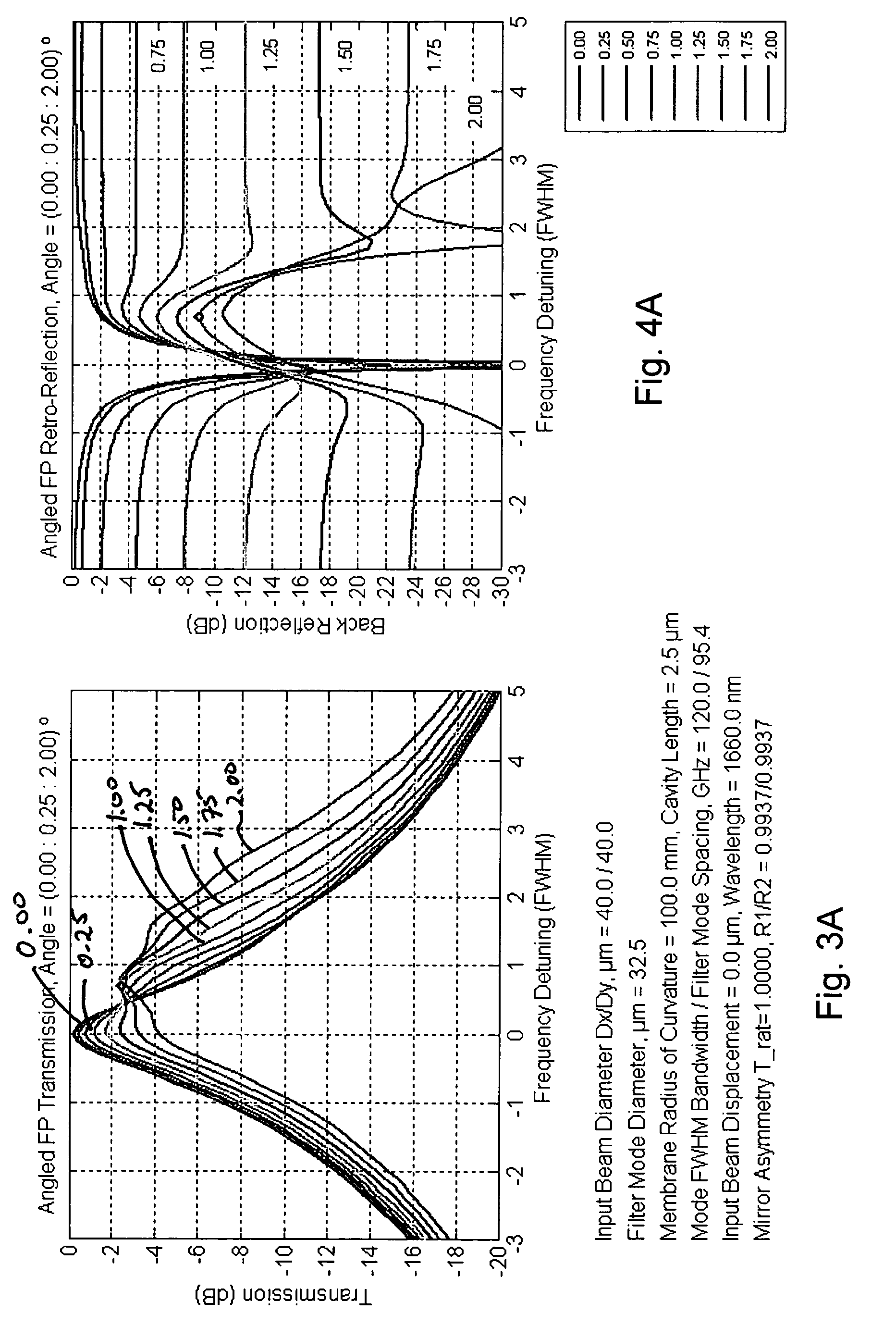Laser with tilted multi spatial mode resonator tuning element
a multi-spatial mode, resonator technology, applied in the direction of laser details, laser output parameters control, optical resonator shape and construction, etc., can solve the problems of temperature tuning finding limited application in telecommunications systems or spectroscopy applications, and the complexity of ecl design manufacturing,
- Summary
- Abstract
- Description
- Claims
- Application Information
AI Technical Summary
Benefits of technology
Problems solved by technology
Method used
Image
Examples
Embodiment Construction
[0041]A number of different types of resonant optical filters exist. Generally, they all comprise two or more mirrors or a ring waveguide structure defining one or more resonant cavities.
[0042]Probably the most common example is the Fabry-Perot resonant filter or interferometer. A Fabry-Perot resonator is typically a linear resonator or cavity, which usually has highly reflecting end mirrors. The end mirrors are often plane but also can be curved, typically with spherical curvature. The Fabry-Perot resonator is often made short enough to achieve a sufficiently large free spectral range; the bandwidth of the resonances is then the free spectral range divided by the resonator finesse. The resonance frequencies are often tuned via cavity length changes.
[0043]Gires-Tournois interferometers (GTI) are another example of resonant filters. See, F. Gires, and P. Tournois, “Interferometre utilisable pour la compression d'impulsions lumineuses modulees en frequence”, C.R. Acad. Sci. Paris 258,...
PUM
 Login to View More
Login to View More Abstract
Description
Claims
Application Information
 Login to View More
Login to View More - R&D
- Intellectual Property
- Life Sciences
- Materials
- Tech Scout
- Unparalleled Data Quality
- Higher Quality Content
- 60% Fewer Hallucinations
Browse by: Latest US Patents, China's latest patents, Technical Efficacy Thesaurus, Application Domain, Technology Topic, Popular Technical Reports.
© 2025 PatSnap. All rights reserved.Legal|Privacy policy|Modern Slavery Act Transparency Statement|Sitemap|About US| Contact US: help@patsnap.com



